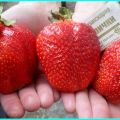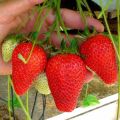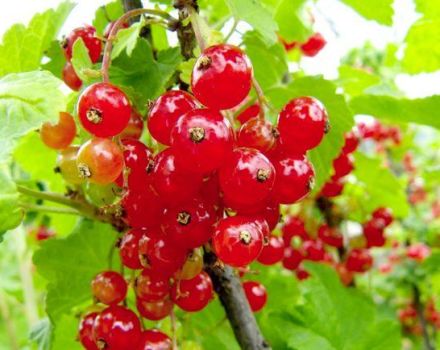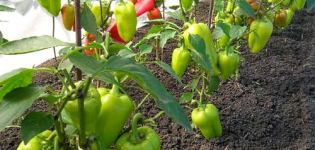Description of Vima Tarda strawberry variety, planting and care, growing and reproduction
Vima Tarda strawberries are distinguished by the size of the berries, the taste and aroma of strawberries. The culture is undemanding to the soil, but does not tolerate a large amount of moisture, soil with a high level of acidity. You can harvest the crop throughout the summer before the first frost.
General characteristics of strawberries
The culture was bred by Dutch breeders who emphasize plant hardiness and high taste. To obtain the Tarda variety, the Zanta and Vikonda cultures were used. As a result of the experiment, a crop with a high yield and large fruits was obtained.
The Vima Tarde strawberry has the following description:
- berries are bright red with a small yellow speck at the tip;
- fruit shape - cone;
- the taste of berries is sweet, with a slight aroma of strawberries;
- the skin of the fruit is dense, the pulp is aromatic;
- bushes have dark green foliage in abundance;
- bushes are large, spreading shoots low above the ground;
- sturdy peduncles;
- from one bush you can get up to 1 kg of berries;
- berry weight is up to 40 grams.
Strawberries are late crops, so the harvest can be harvested before the first frost. At the same time, the size of the berry does not decrease, as does the taste.

Advantages and disadvantages of the variety
Strawberries have the following pros and cons.
| Benefits | disadvantages
|
| Taste qualities | Demanding on the type of soil |
| Large berries | Low mustache formation |
| Disease resistance | |
| Low temperature resistance | |
| High yield | |
| Keeps its presentation for a long time |
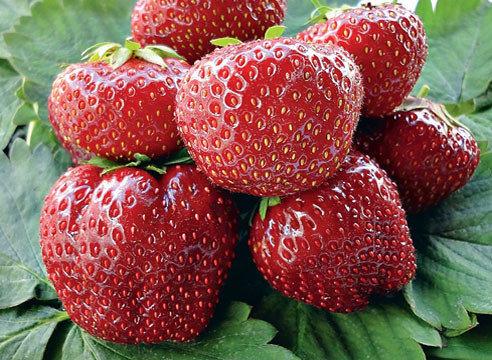
The culture has many advantages and is used for planting in the garden.
Growing Vima Tarda strawberries
The peculiarity of the culture lies in the cultivation method and the rules of care. To obtain a crop, it is necessary to timely fertilize and prevent the development of diseases.
When to plant
This strawberry variety is planted in the following periods:
- Spring is considered the best season for planting strawberries. Transplanting is carried out immediately after the snow melts, when the soil warms up to 10 degrees. The seedlings planted in spring quickly strengthen their root and develop well.
- Autumn - this type of planting must be done until mid-September. Plants may not take root well in a new location and require regular fertilization.It is important to choose the right transplanting period, the roots of the culture must be strengthened before the onset of frost.
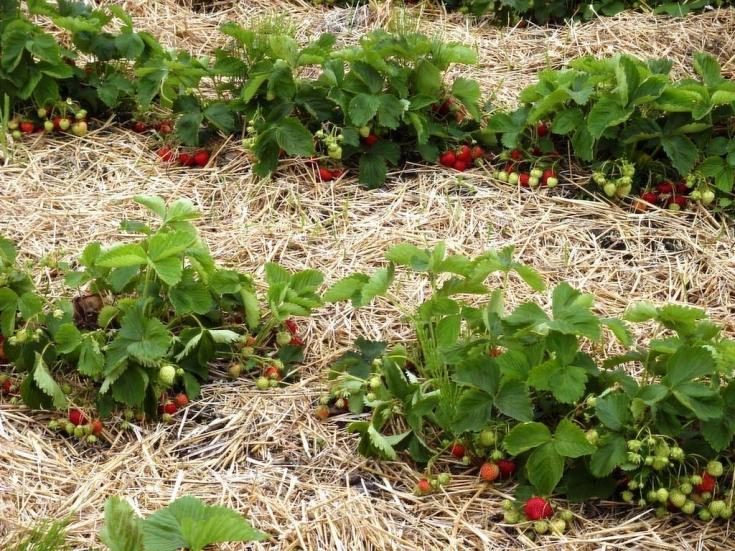
The choice of planting period depends on the weather conditions and the method by which the plant will propagate.
Where to plant
When choosing a landing site, you should give preference to sunny locations. The crop does not like shade and can reduce its yield. It is not recommended to plant strawberries near trees and tall shrubs.
The soil must have sufficient moisture and nutrients.
The soil is selected with neutral acidity. The culture will develop if onions, garlic, legumes, oats were the predecessors on the site. Such plants will reduce the risk of pests and saturate the soil with all useful substances.
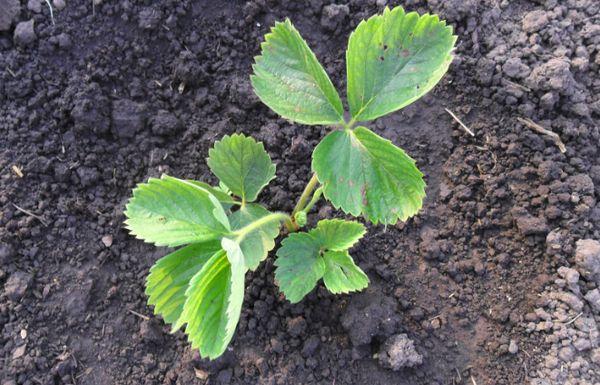
Selection of seedlings
When choosing a planting material, you must pay attention to the following criteria:
- the root should not have seals and be light brown in color;
- the root should consist of 3-4 separate processes, between which there should be small processes;
- seedlings should have 3-6 dense dark green leaves;
- the main bud is pink.
The operation of seedlings is not recommended when the following characteristics are available:
- the presence of sluggish leaves;
- leaves are damaged, with spots and bloom;
- the root is dark in color, this appearance may indicate the weakness of the plant;
- the presence of rot and seals on the root system.
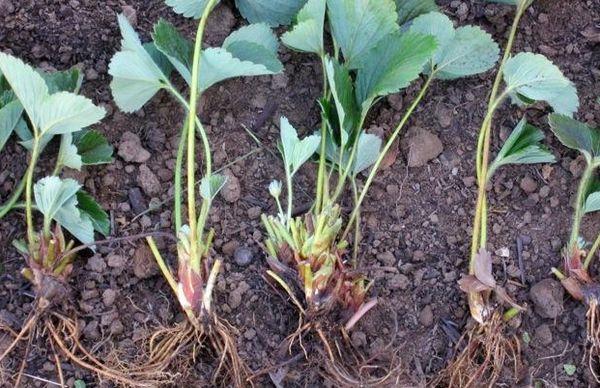
Seedlings must be selected with the presence of soil, this will reduce the risk of damage to the root system and accelerate the process of plant adaptation to a new place.
Planting process
The strawberry variety Vima Tarda has the following planting algorithm:
- The soil for planting is prepared before transplanting. This is necessary so that the soil subsides and is saturated with useful components;
- The landing site is freed from roots and vegetation, dug up, superphosphate and humus are introduced.
- Small holes are made up to 10 cm deep.
- The seedling is placed in the hole so that the roots are straightened.
- The seedling is sprinkled with soil, compacted and watered abundantly with water.
- When planting seedlings in spring, it is necessary to use a layer of mulch from sawdust and humus or cover the rows with foil.
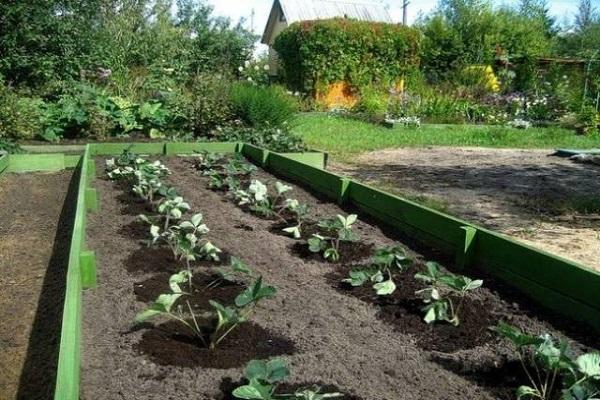
A distance of at least 30 cm must be observed between seedlings.
Culture care
The culture is unpretentious to care, but requires compliance with the rules for watering and fertilizing.
Watering, weeding and loosening
To obtain a harvest, gardeners should follow these recommendations:
- The culture requires regular watering. However, it must be borne in mind that with excessive moisture, the roots of the plant begin to rot, and the berries lose their taste. Water the strawberries once every 3 days.
- Weeding the beds is done manually to reduce the risk of root damage.
- Loosening the soil saturates the root system with oxygen. Loosening is carried out regularly before watering.
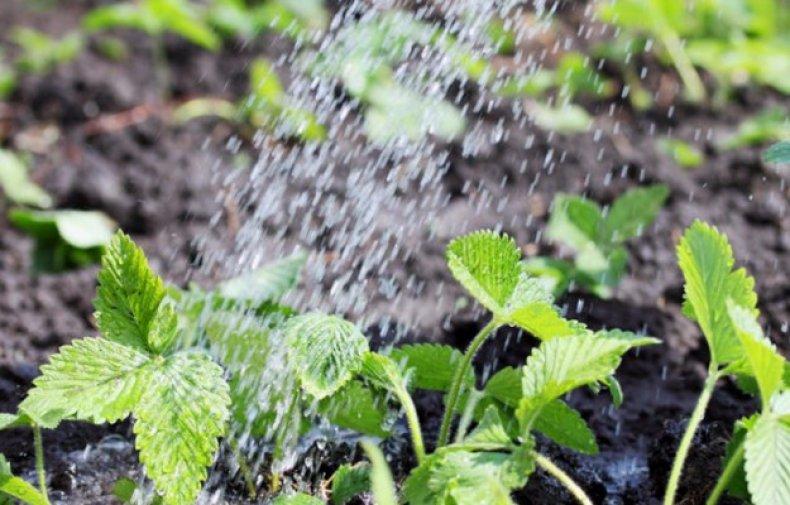
The procedure for moistening and loosening the soil is carried out after sunset, since the sun's rays can lead to burns on the roots and leaves of strawberries.
Fertilization and mulching
The plant does not tolerate a large amount of fertilizers, therefore, the introduction of nutrients must be carried out gradually:
- A week after planting, a urea solution must be added to the ground. Mix 50 grams of granules in one liter and pour the garden over the root area.
- After the inflorescences have fallen off, chicken droppings are used in a proportion of 1 kg per bucket of water, water the garden with the resulting composition.
- Once the berries have formed, wood ash can be used to strengthen the plant and reduce the risk of disease.
- Potash fertilizers can be used during the ripening period;
- Humus must be used before winter.
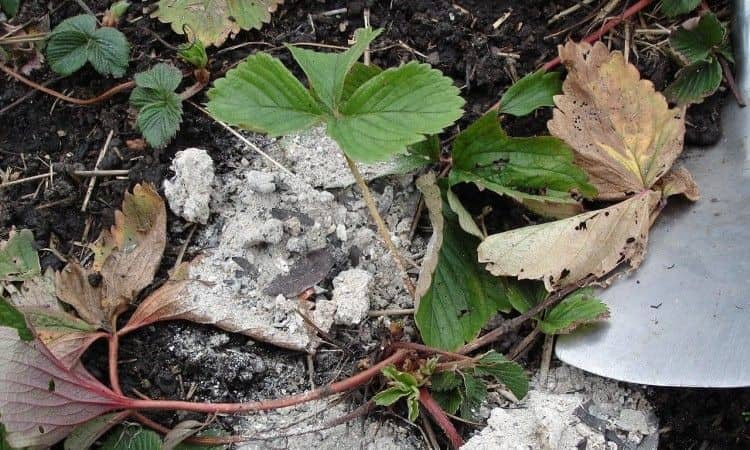
Mulching maintains soil moisture and reduces weeds. Sawdust or coniferous needles can be used for mulch.The mulch layer needs to be changed every 3 weeks to reduce the risk of harmful microorganisms.
Diseases and pests
Strawberries are highly immune, however the following diseases and possible pests may occur:
- Gray rot - affects the leaves and berries of the culture, manifests itself in the form of plaque on the shrub. To eliminate the disease, the following types of drugs are used: "Fuksalim" or "Tiram".
- Aphids are small green insects that damage young shoots. The insect multiplies very quickly and can lead to the death of a large area of strawberries in a short time. To eliminate it, a soap solution is used, which is sprayed on the culture.
- Ground mite - affects the leaves and root of strawberries. The insect feeds on sap and gradually leads to the death of the culture. To eliminate the tick, you can use the following drugs: "Bitoxibacillin", a solution of copper sulfate.
In order to prevent diseases from appearing on the culture, it is necessary to maintain cleanliness in the garden and regularly inspect the plant for damage.
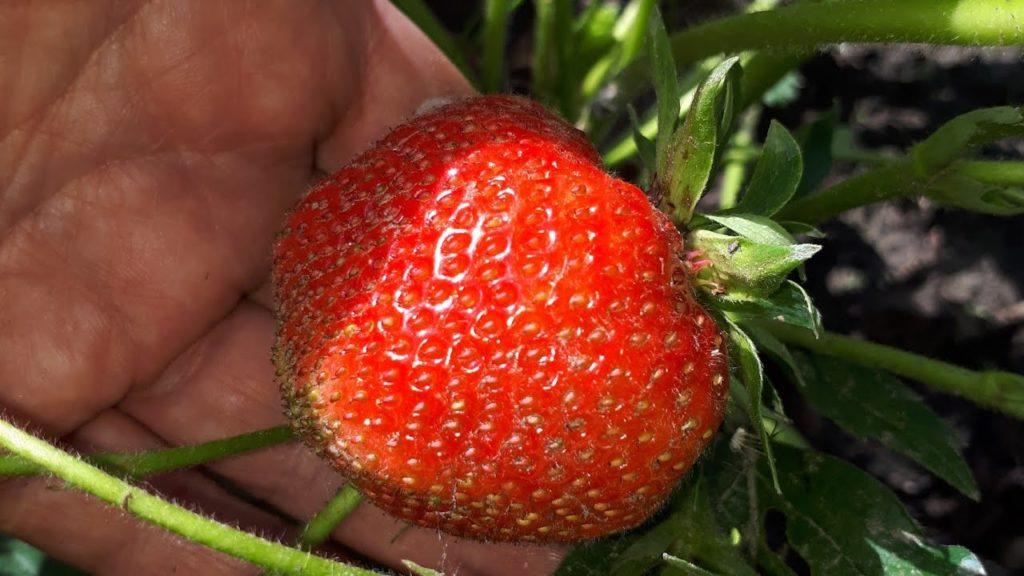
Important. Plants that have undergone the disease are very difficult to cure, therefore, to prevent further spread, it is necessary to eliminate the damaged specimens, and spray the rest of the beds with special preparations.
Reproduction of garden strawberries
Culture can multiply in three ways. The method can be adjusted according to personal preference. Whiskers are a common breeding method, but seeds can also be used.
By dividing the socket
To use this method, it is necessary to separate the socket along with the root from the mother bush. The resulting shoot is planted in the ground, this method is often used, but it can harm the mother bush.
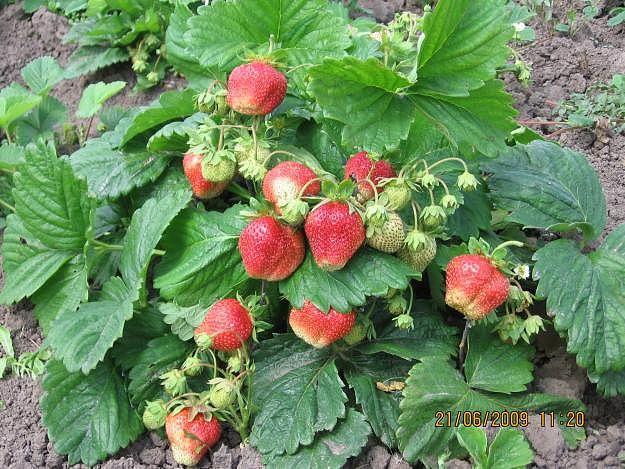
Mustache division
Bushes are left from which inflorescences are removed. The released mustache is buried in the ground, and after the cutting takes root, it is cut off and transplanted into a separate hole. This type of plant transplantation is harmless to the mother bush and allows you to get up to 7 cuttings at once.
Seeds
To obtain seeds, you must perform the following sequence of actions:
- choose berries that are ripe and have no visible damage;
- the berries are kneaded to a state of gruel;
- the resulting gruel is dried for several days, after which it is washed with clean water;
- the resulting seeds are dried and used to grow seedlings.
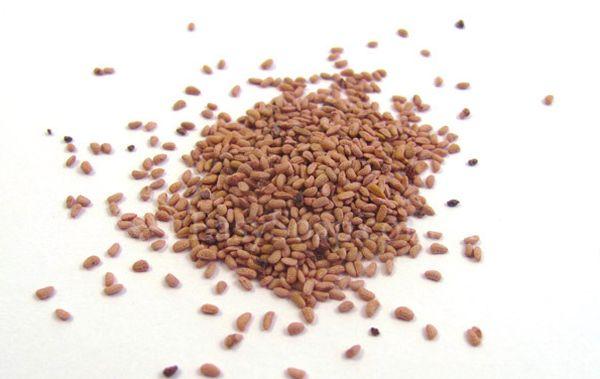
To obtain seedlings, you need to plant seeds in a container with a fertile mixture and cover with a plastic bag until shoots appear. After the shoots appear, you must open the container daily for 30 minutes to harden the shoots. Time is gradually increasing. Seedlings are planted in the soil after 4-6 leaves appear.
Cleaning and storage rules for strawberries
The culture begins to bear fruit from mid-June. It is recommended to pick berries every 3 days. The berries are stacked in one layer in a wooden box and placed in a cool place. The use of deep containers can lead to damage to the integrity of the fruits and damage to the crop, strawberries are stored for up to 4 days, if necessary, keep the berries for a long time, the harvest is harvested 1-2 days before ripening.
Strawberries taste good and are often used in jam and preserves. Also fruits can be used for drying and freezing. The berries do not change their size and taste throughout the entire yield period.




